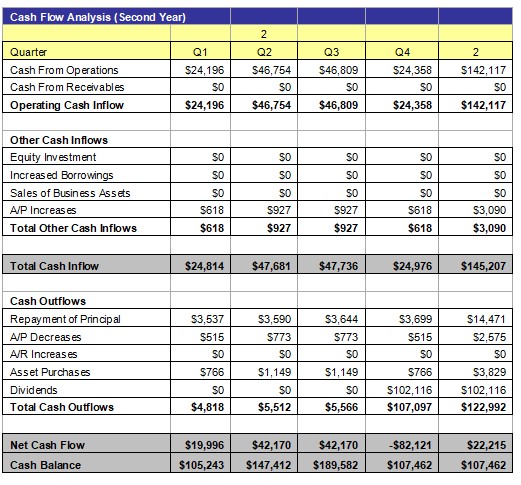
1.0 Executive Summary
The purpose of this business plan is to raise $115,000 for the development of a Daiquiri Bar while showcasing the expected financials and operations over the next three years. The Daiquiri Bar, Inc. (“the Company”) is a New York based corporation that will provide a comfortable environment with a focus on a tropical atmosphere with alcohol and food services to customers in its targeted market. The Company was founded by John Doe.
1.1 The Bar
The Daiquiri Bar will feature approximately 1,500 square feet of space. The facility will have a full bar that will serve spirits (with a heavy focus on daiquiris and frozen mixed drinks), wine, and beer. It should be noted that the business will provide its entire daiquiri and frozen cocktail menu on a take-away basis.
The Company will also have TVs to show televised sporting events, a juke box, and a pool table for customer enjoyment. The location will also have a moderately sized food service that will serve foods normally associated with Daiquiri Bars. At all times, the business will comply with all social distancing guidelines through the course of the pandemic.
The Company will also enact strict policies regarding underage drinking, and the business will comply with all state regulations regarding the sale of alcohol to the general public. Mr. Doe is currently in the process of obtaining the liquor license for the Daiquiri Bar.
The third section of the business plan will further describe the operations by the Daiquiri Bar.
1.2 The Financing
Mr. Doe is seeking to acquire $115,000 from as a bank loan. The interest rate and loan agreement are to be further discussed during negotiation. This business plan assumes that the business will receive a 7 year loan with a 6% fixed interest rate. The financing will be used for the following:
- Development of the Company’s Daiquiri Bar location.
- Financing for the first six months of operation.
- Capital to purchase the alcohol inventory.
Mr. Doe will contribute $20,000 to the venture.
1.3 Mission Statement
The Daiquiri Bar’s mission is to become the recognized leader in its targeted market by providing a large selection of alcohol while concurrently providing a comfortable environment for customers to enjoy food and a tropical atmosphere.
1.4 Management Team
The Company was founded by John Doe. Mr. Doe has more than 10 years of experience in the food service industry. Through his expertise, he will be able to bring the operations of the business to profitability within its first year of operations.
1.5 Sales Forecasts
Mr. Doe expects a strong rate of growth at the start of operations. Below are the expected financials over the next three years.
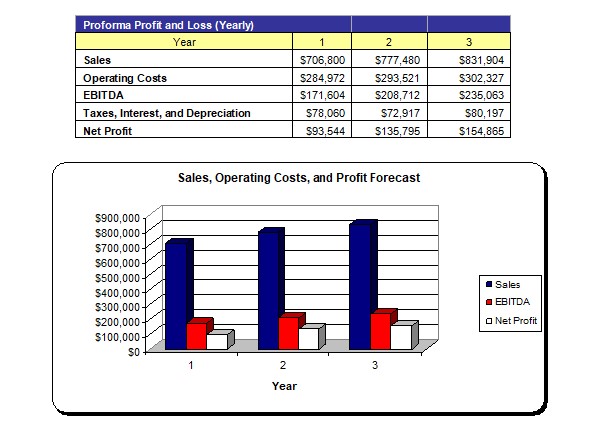
1.6 Expansion Plan
Mr. Doe intends to implement marketing campaigns that will effectively target individuals within the target market. The Founder may seek to develop additional locations after the third year of operations.
2.0 Company and Financing Summary
2.1 Registered Name and Corporate Structure
Daiquiri Bar, Inc. The Company is registered as a corporation in the State of New York.
2.2 Required Funds
At this time, the Daiquiri Bar requires $115,000 of debt funds. Below is a breakdown of how these funds will be used:
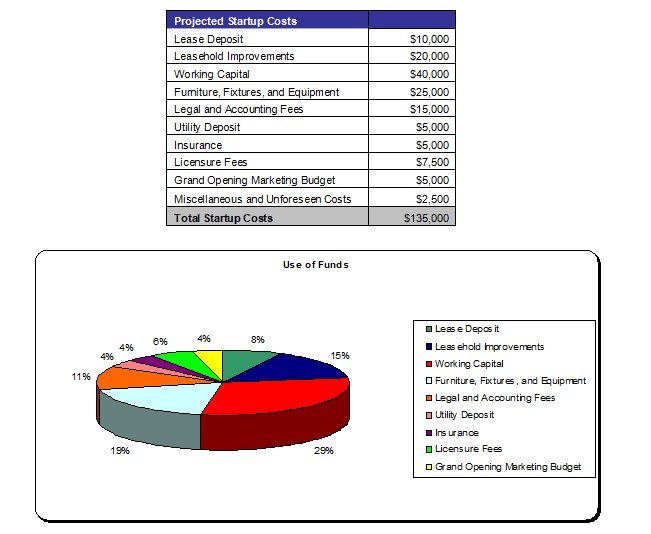
2.3 Investor Equity
Mr. Doe is not seeking an investment from a third party at this time.
2.4 Management Equity
John Doe owns 100% of the Daiquiri Bar, Inc.
2.5 Exit Strategy
If the business is very successful, Mr. Doe may seek to sell the business to a third party for a significant earnings multiple. Most likely, the Company will hire a qualified business broker to sell the business on behalf of the Daiquiri Bar. Based on historical numbers, the business could receive a sales premium of up to 4 times earnings.
3.0 Products and Services
Below is a description of the products and services offered by the Daiquiri Bar.
In regards to the Daiquiri Bar location, the facility will also feature a number of amenities including a large LCD TV (for sports events), a jukebox, electronic darts, a pool table, and other entertainment focused installations that will fit appropriately into the Company’s overall tropical atmosphere.
3.1 Alcohol Sales
The Daiquiri Bar will offer a wide variety of liquors and alcoholic beverages that are available on the menu. The restaurant will maintain a full bar including liquors, spirits, several vintages and types of wine, as well as an extensive number of bottled and draught beers. Approximately 70% of sales are expected to come from the sale of daiquiris and other frozen mixed cocktail beverages (such as pina colodas).
At all times, the Daiquiri Bar will comply with all state and municipal regulations regarding the sale of alcohol. For each patron, a valid ID will be required to ensure that the patron is 21 or older. For very busy evenings, Mr. Doe will hire a part time door bouncer to check identifications as customers enter the bar. Additionally, Management will keep all liquor licenses up to date, and will file the appropriate documentation and fees on a quarterly basis.
3.2 Food Service
The Company will also provide a moderate sized food service that will consist of traditional bar style food and tapas. Management anticipates that approximately 35% of the Company’s revenues will come from food sales.
4.0 Strategic and Market Analysis
4.1 Economic Outlook
This section of the analysis will detail the economic climate, the bar venue industry, the customer profile, and the competition that the business will face as it progresses through its business operations.
Currently, the economic climate is uncertain. The pandemic stemming from Covid-19 has created a substantial amount of turmoil within the capital markets. It is expected that a prolonged economic recession will occur given that numerous businesses are being forced to remain closed for an indefinite period of time (while concurrently having their respective employees remain at home). It should be noted that central banks around the world have taken aggressive steps in order to ensure the free flow of capital into financial institutions. This is expected to greatly blunt the economic issues that will arise from this public health matter.
However, the current economic climate should have a minimal impact on the Company’s ability to generate revenues. As the economy is reopening, more people are eager to resume their normal lifestyles (including going to venues such as daiquiri bars). Additionally, the Company will offer a host of “take-away” daiquiris and cocktails. This will further ensure that the business will operate profitably and with a positive cash flow at all times.
4.2 Industry Analysis
There is a plethora of bars and drinking establishments in the United States. A U.S. Economic census report indicates that there are over 60,000 individual establishments in the country. This number is expected to continue as bars (including daiquiri bars) remain a popular form of entertainment among people under forty.
Each year the industry generates more than $24 billion dollars of revenue. The industry also employs more than 360,000 people nationwide. This is a mature industry, and the future expected growth rate is expected to mirror that of the general economy.
4.3 Customer Profile
The Daiquiri Bar’s average client will be a middle to upper middle class man or woman living in the Company’s target market. Common traits among clients will include:
- Annual household income exceeding $50,000
- Lives or works no more than 15 miles from the Company’s location.
- Will spend $25 per visit to the Daiquiri Bar
- Ages 25 to 45



4.4 Competition
This is one of the sections of the business plan that you must write completely on your own. The key to writing a strong competitive analysis is that you do your research on the local competition. Find out who your competitors are by searching online directories. If there are a number of competitors in the same industry (meaning that it is not feasible to describe each one) then showcase the number of businesses that compete with you, and why your business will provide customers with service/products that are of better quality or less expensive than your competition.
5.0 Marketing Plan
The Daiquiri Bar intends to maintain an extensive marketing campaign that will ensure maximum visibility for the business in its targeted market. Below is an overview of the marketing strategies and objectives of the Daiquiri Bar.
5.1 Marketing Objectives
• Develop an online presence by developing a website and placing the Company’s name and contact information with online directories.
• Maintain an expansive presence via social media platforms including the potential use of social media influencers to boost the visibility of the Daiquiri Bar.
• Implement a local campaign with the Company’s targeted market via the use of flyers, local newspaper advertisements, and word of mouth advertising.
5.2 Sales Overview
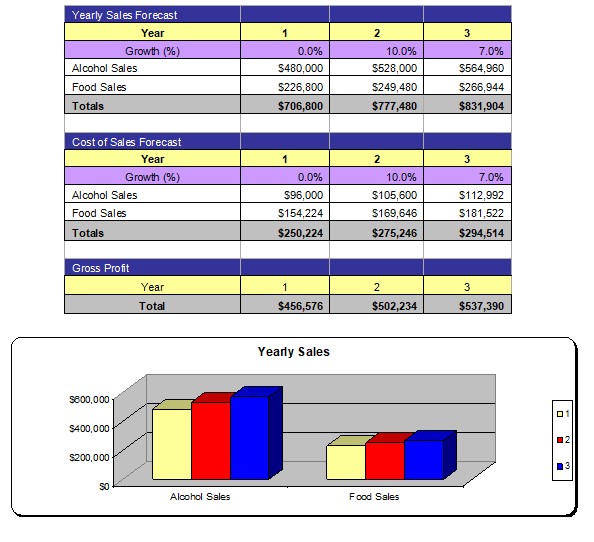
5.3 Marketing Strategies
Mr. Doe intends on using a number of marketing strategies that will allow the Daiquiri Bar to easily target both men and women within the target market. These strategies include traditional print advertisements and ads placed on search engines on the Internet.
In addition to the high visibility location, the Company will also use direct mail, flyers, and other forms of local advertisement to promote traffic to the Daiquiri Bar. During the one month grand opening period, the Company will offer extended “happy hours”, discounts on drinks, and other promotions that will draw patrons to the location. Management feels that this will solidify a repeat customer base that will regularly frequent Daiquiri Bar.
The business will also use an expansive online marketing strategy in order to further drive traffic to the location while also making the general public aware of the Company’s take-away daiquiris and cocktails. The business will develop an expansive website that showcases the operations of the business, the menu, pricing information, and contact information. The website will be mobile friendly and search engine optimized. The website will be ecommerce enabled so that patrons can place orders for take-away beverages through the course of the pandemic.
Beyond the Company’s proprietary website, Daiquiri Bar, Inc. will maintain profiles on popular social media platforms including Facebook, Twitter, Instagram, and YouTube. The Company’s website will feature links to all social media platforms. Beyond social media sites, the business will also have profiles on Yelp.com.
Most importantly, Management expects that the business will benefit greatly from the positive reviews that will be on these sites from customers (which will further boost the Daiquiri Bar brand while concurrently contributing a substantial benefit for the Company’s search engine optimization strategies).
Moving forward, the business may seek to further promote Daiquiri Bar, Inc. by hiring a social media influencer that lives within 20 miles of the Company’s location. This individual (with a major online following) would have their experience at the location filmed, and they will distribute it through their respective social media channels. This can be a very high impact method of increasing awareness of the Daiquiri Bar brand.
5.4 Pricing
For daiquiris, cocktails, and related alcohol beverages – the business will charge $ $8. This includes take-away beverages. For food items, the average price will be $7 per item.
For alcoholic beverage sales, Management anticipates gross margins of 80%. For food sales, gross profits will be 68%.
5.5 Marketing Return on Investment
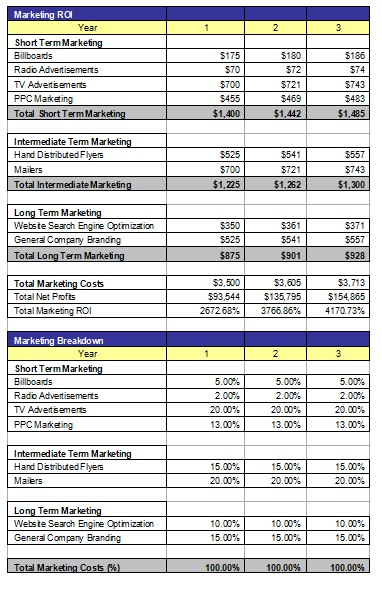
6.0 Organizational Plan and Personnel Summary
6.1 Corporate Organization
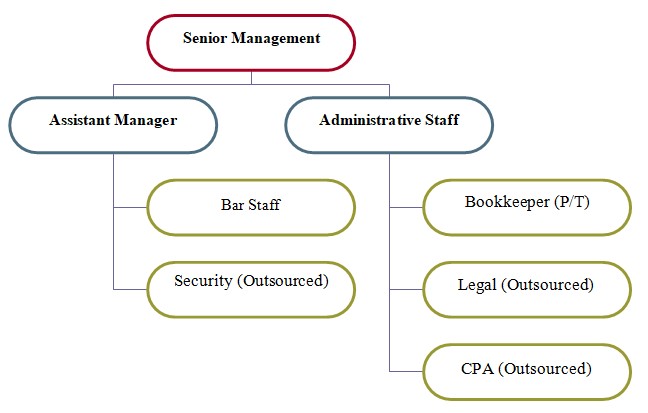
6.2 Organizational Budget

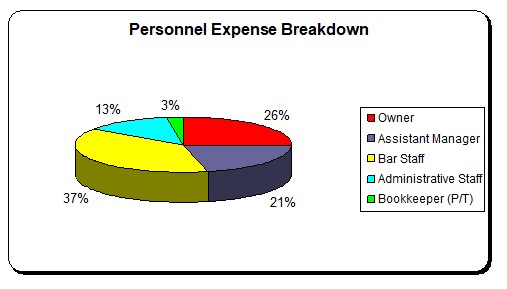
7.0 Financial Plan
7.1 Underlying Assumptions
The Company has based its proforma financial statements on the following:
- The Daiquiri Bar will have an annual revenue growth rate of 16% per year.
- The Owner will acquire $115,000 of debt funds to develop the business.
- The loan will have a 7 year term with a 6% interest rate.
7.2 Sensitivity Analysis
The Company’s revenues are only modestly sensitive to negative changes in the economic climate. Foremost, the business will provide all of its daiquiris and cocktails on a take-away basis in order to ensure stable income generation throughout the course of the pandemic. The location will feature substantial outside seating in order to comply with social distancing regulations. As the pandemic subsidies, people are expected to substantially frequent nighttime venues. This massive demand will produce substantial revenues for the Company. Daiquiri Bar will maintain a moderately low operating and overhead cost infrastructure.
7.3 Source of Funds
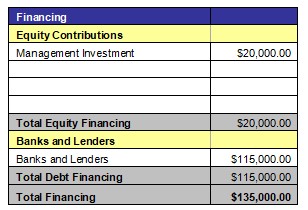
7.4 General Assumptions

7.5 Profit and Loss Statements
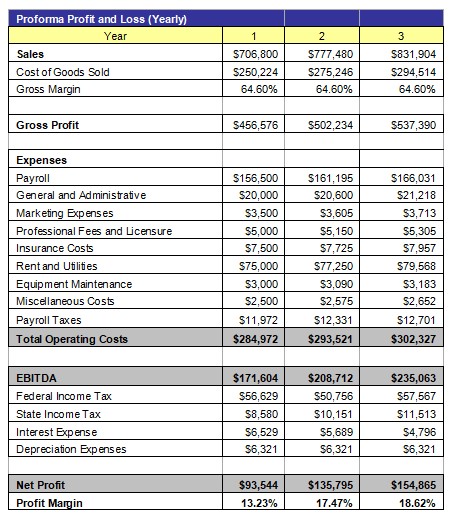

7.6 Cash Flow Analysis


7.7 Balance Sheet

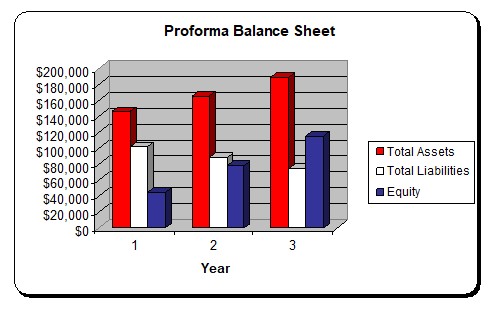
7.8 Breakeven Analysis

7.9 Business Ratios
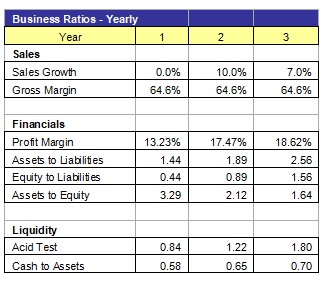
Appendix A – SWOT Analysis
Strengths
- Efficient back office support for managing the expansive alcohol inventory of Daiquiri Bar, Inc.
- The ability to provide take-away daiquiris and cocktails (through the course of the pandemic), which will allow the business to immediately generate profits.
- High gross margins on all alcohol and small food item sales made through the Company’s location.
- Moderately low operating and overhead costs as a function of revenues.
- Motivated and experienced owner-operator, John Doe.
Weaknesses
- Adverse market conditions can impact revenue.
- Several competitors operating in targeted New York metropolitan area markets.
- Moderate barriers to entry.
Opportunities
- Development of multiple Daiquiri Bar locations throughout greater New York metropolitan area.
- Develop relationships with alcohol wholesalers for better pricing.
- Potential acquisition of additional rounds of capital in order to further fuel the growth of the business.
Threats
- Ongoing economic uncertainty (although a limited risk for bars given that they are thriving via take-away mixed drinks).
- Ongoing competitive issues.
Appendix B – Expanded Profit and Loss Statements


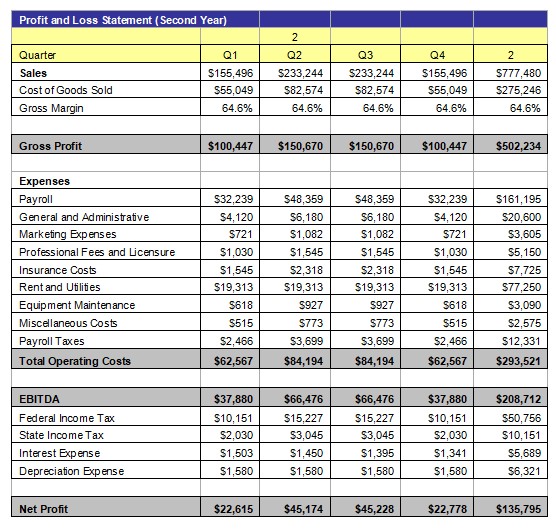
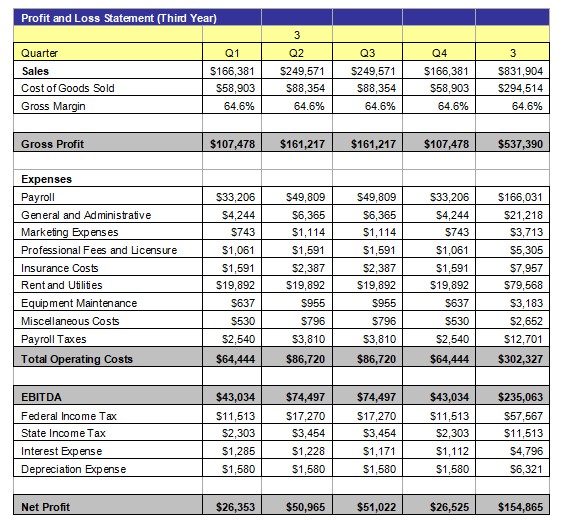
Appendix C – Expanded Cash Flow Analysis


